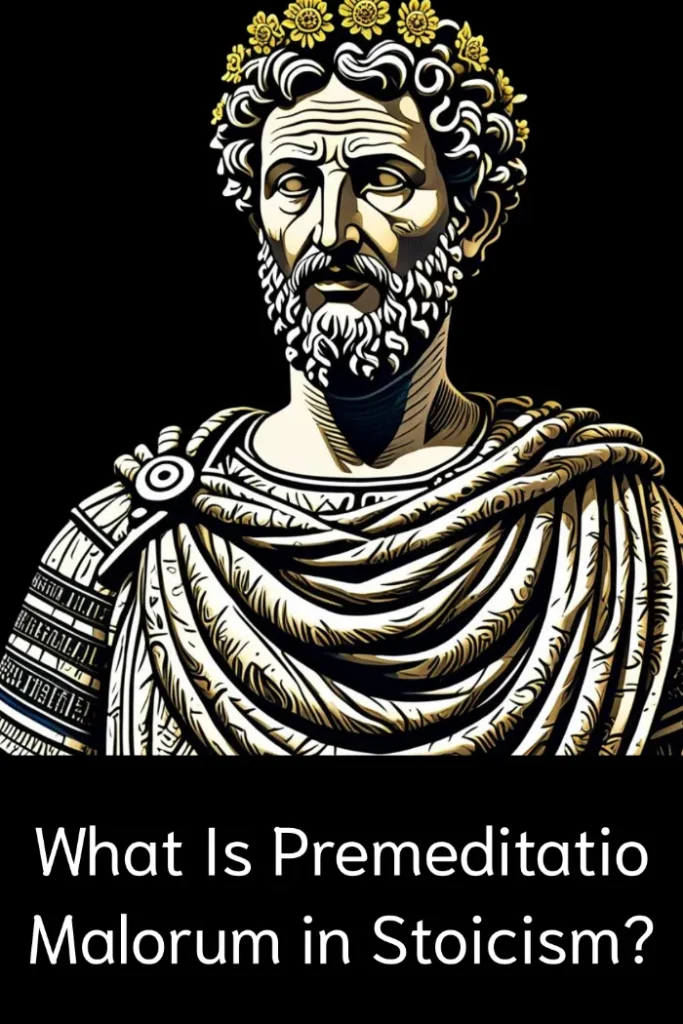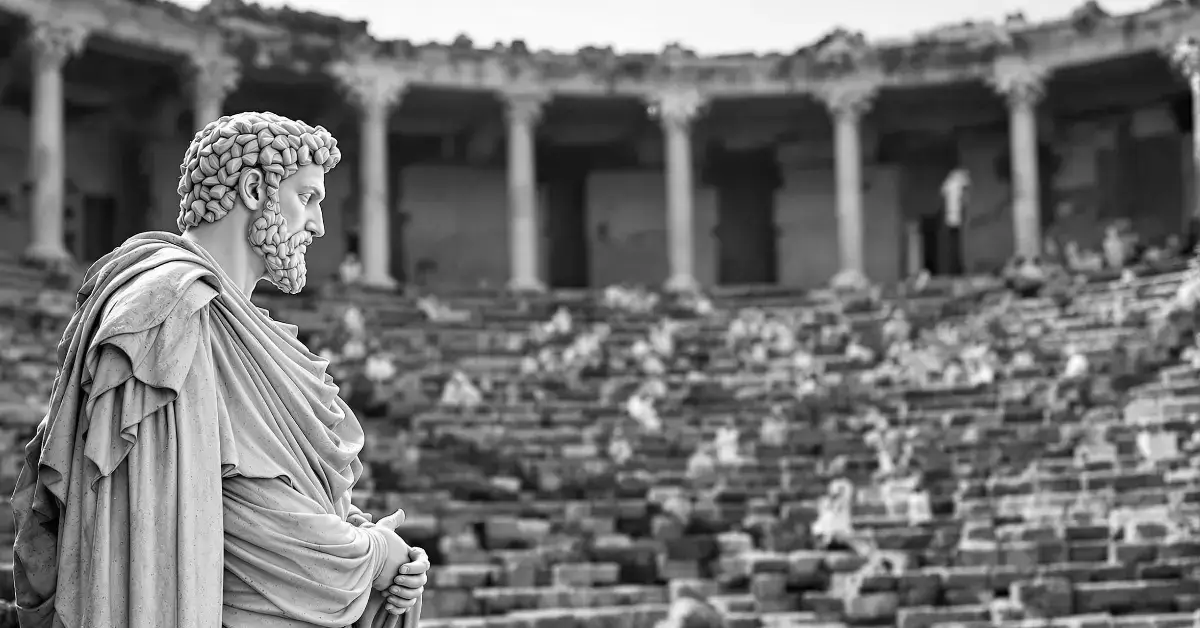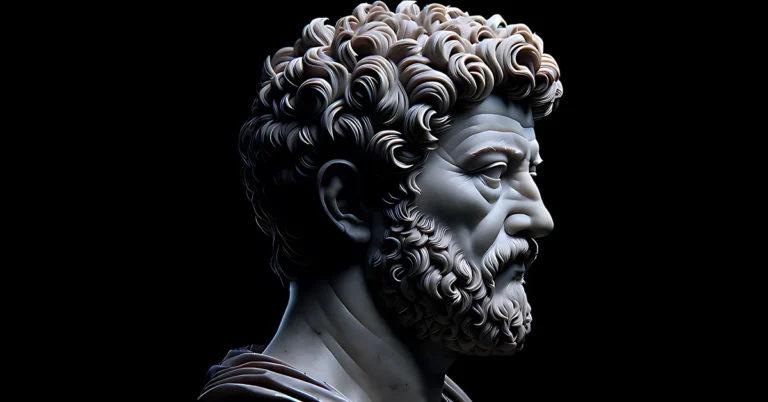What Is Premeditatio Malorum?
There’s a reason ancient Stoics weren’t easily shaken. They didn’t just hope for the best—they mentally prepared for the worst. This wasn’t some doom-and-gloom mindset. It was strategic. It was powerful. And it had a name: Premeditatio Malorum.
This Stoic practice isn’t just historical philosophy. It’s mental training—battle prep for life. And if you’ve ever caught yourself spiraling over a “what if,” this might be exactly what you need to build the kind of resilience that doesn’t crack under pressure.
What Does Premeditatio Malorum Mean?
The phrase Premeditatio Malorum means “premeditation of evils” in Latin. But it’s not about obsessing over misfortune—it’s about rehearsing it. This is where Stoicism really flips the script.
According to the Stoic definition, philosophy isn’t just intellectual. It’s practical. It’s not about what you know—it’s about how you live when life hits hard. The meaning of Premeditatio Malorum, in this light, is simple: imagine what could go wrong—not to panic, but to prepare.
You’re not trying to control the future. You’re trying to control your response to it.
The core idea behind this part of Stoic philosophy is emotional durability. By visualizing setbacks—loss, failure, rejection—you weaken their grip. You rob fear of its surprise attack. This is stoicism meaning in action: calm, control, clarity.
This is not pessimism. It’s preparation.

What Is Premeditatio Malorum in Stoicism?
In Stoic philosophy, Premeditatio Malorum was practiced by some of the toughest thinkers in history—Seneca, Epictetus, and Marcus Aurelius. Seneca once wrote:
“He robs present ills of their power who has perceived their coming beforehand.”
This is Premeditatio Malorum Seneca style—blunt, fearless, rational.
To define Stoicism at its core is to understand its beliefs: that we should focus only on what we can control, remain indifferent to what we can’t, and train our minds like warriors. Stoic Premeditatio Malorum fits right into that belief system.
This is very important to pay attention to: you don’t visualize bad outcomes to manifest them. You do it to strip away their power. You’re walking into the storm mentally, before it ever arrives physically.
In modern Stoicism, this practice is still highly relevant. Before a big job interview, a difficult conversation, or a risky life move, you use Premeditatio Malorum to rehearse. Not to feed anxiety, but to build inner control. You’re not hoping things go wrong—but you’re damn sure not going to be blindsided if they do.
That’s the Stoic mindset: reality-proof.
Why Imagining the Worst Isn’t a Downer—It’s a Superpower
Most people think preparing for the worst is a recipe for anxiety. But the Stoics knew the opposite was true. When you’ve already faced a storm in your mind, the real thing hits different. It’s lighter. Smaller. Manageable.
The Stoic mindset isn’t about being cold or unfeeling—it’s about being trained. It’s the difference between reacting and responding. When you use Premeditatio Malorum, you don’t become paranoid. You become bulletproof.
One of the most powerful quotes about preparing for the worst comes from Marcus Aurelius in Meditations:
“The things you think about determine the quality of your mind. Your soul takes on the color of your thoughts.”
That’s the mind of a Stoic—calm under pressure because it’s already been there.
But does this actually work in real life? Let’s dig in.
Does Negative Visualization Actually Work?
Short answer: yes—but only if you’re doing it right.
Negative visualisation, in Stoicism, isn’t about spiraling into “what if” anxiety. It’s about running a quiet mental test—a simulation. You don’t dwell. You rehearse. You train your Stoic mind to stop flinching at life’s curveballs.
Think of it like a fire drill. You hope you never need it, but if flames break out, you’re ready.
In practical Stoicism, this becomes a daily mindset tool. Before you walk into a meeting, you picture it going badly. Before you speak up, you imagine being ignored. Before a big day, you imagine small failures. And by doing so, you teach your nervous system that even if it does go wrong… you’ll survive.
Why This Isn’t Toxic Positivity or Self-Sabotage
There’s a weird myth floating around that Stoicism is cold. That it teaches you to suppress your emotions or expect the worst all the time.
Wrong.
This isn’t about pretending everything’s fine (toxic positivity) or obsessing over disaster (self-sabotage). Premeditatio Malorum is about balance. It pairs positive and negative visualisation in the right ratio: you recognize what could go wrong, then get stronger from it.
This is how many Stoics managed to keep their dignity while facing exile, illness, or even death. They weren’t numb. They were prepared. And in that preparation, they found peace.
Here’s the kicker: this practice is one of the most underrated ways of overcoming anxiety without medication. Why? Because when you visualize pain, embarrassment, failure, or loss ahead of time—and see yourself making it through—you no longer fear it the same way.
You build mental calluses. You stop living in fear of “what if.” No affirmations. Just brutal clarity and trained calm.
That’s Stoicism.
How to Practice Premeditatio Malorum Like a Modern Stoic
You don’t need incense, a cave, or a toga to practice Premeditatio Malorum. What you need is presence and honesty. Because practical Stoicism isn’t about talking like a philosopher. It’s about acting like one when life turns against you.
This is where the Stoic mindset comes alive. When you deliberately visualize the worst, you train your emotions to stop overreacting. You stop clinging. You stop panicking. You start adapting.
This practice is helpful to figure out how to get over anxiety, not by avoiding fear, but by walking straight into it with intention.
Here’s how.
How Do I Practice Negative Visualization?
Start small.
Step 1: Choose a moment in the day—morning, evening, or before a stressful event.
Step 2: Ask yourself, “What’s the worst that could realistically happen?”
Step 3: Visualize it. Feel it. Don’t fight the discomfort—observe it.
Then shift.
Ask yourself, “If this happened, how would I respond like a Stoic?”
This is the power of negative visualisation in Stoicism: it strengthens your Stoic virtues—courage, wisdom, temperance, and justice—not in theory, but through mental rehearsal.
You’re not fantasizing about disaster. You’re preparing for discomfort, so when life bites—you don’t flinch.
What Is an Example of Negative Visualization?
You’re waiting for results—job application, exam, health test. You feel the anxiety crawling in. Instead of suppressing it, you pause and ask: What if I didn’t get it? What if the result is bad?
You visualize that outcome. You picture yourself feeling the sting. And then… you watch yourself recover. You imagine your next step. You take your power back.
This is the negative visualisation that Seneca taught—not wallowing in imagined tragedy, but mentally bracing for impact so it doesn’t break you.
In Letters from a Stoic, Seneca wrote:
“We suffer more in imagination than in reality.”
That’s one of the most practical Seneca philosopher quotes you can live by. Most fear isn’t rooted in fact—it’s bloated by mental avoidance. Negative visualization deflates it.

How to Do Premeditatio Malorum in 5 Minutes a Day
Don’t overthink it. You only need 5 minutes.
Here’s a simple daily method:
-
Name a fear. Something you’ve been silently dreading.
-
Picture it. Not vaguely—specifically. The awkwardness. The loss. The regret.
-
Breathe through it. Accept the feeling. Don’t resist it.
-
Shift perspective. What can you still control if that happens?
-
End with strength. Repeat one of the Marcus Aurelius Stoic quotes like armor:
“If you are distressed by anything external, the pain is not due to the thing itself, but to your estimate of it.”
When you prepare yourself for the worst, you don’t become dark. You become calm. You become prepared. And that’s what Premeditatio Malorum Stoicism is all about—clarity under pressure.
It’s five minutes of discomfort… traded for a lifetime of resilience.
But What If It Makes Me More Anxious?
This is the part nobody talks about.
When people hear “visualize the worst,” their first thought is: “Won’t that just make me spiral harder?”
Fair question. And it’s valid.
If you’ve ever struggled with overthinking or anxiety, the idea of deliberately imagining loss, failure, or rejection might sound like pouring fuel on the fire.
But spiraling isn’t caused by what you visualize—it’s caused by how you visualize it.
And that’s the difference Stoicism makes. It turns uncontrolled panic into structured reflection. It transforms fear from something that owns you… into something you train with.
Let’s break that down.

How to Stop Negative Visualization from Spiraling
First rule: You’re not supposed to suffer through the practice.
Premeditatio Malorum isn’t an emotional beatdown. It’s a controlled mental exercise—more like stretching a muscle than breaking it.
Here’s how to keep it from spiraling:
-
Set a time limit. No more than 5–10 minutes. Treat it like meditation with a purpose.
-
Use your breath as a reset button. The second your thoughts start spinning, focus on your breath. Bring it back to neutral.
-
Visualize recovery, not just damage. Don’t stop at “what if I lose my job?” Go one step further: “How would I adapt?”
-
End with grounding. Walk. Journal. Read a quote. Anchor yourself in the present before you re-enter your day.
You’re not supposed to live in the worst-case scenario—just visit it long enough to build emotional immunity.
Remember: Stoicism isn’t about marinating in fear. It’s about making fear familiar, so it can’t sneak up on you.
The Key Is Control—Not Catastrophizing
Let’s draw a clear line.
Catastrophizing is when your mind runs wild, stacking disasters on top of each other like a collapsing Jenga tower.
Premeditatio Malorum is when you choose the scenario. You control the timeline. You direct the outcome.
That’s not panic. That’s precision.
Marcus Aurelius didn’t write in Meditations to torment himself—he wrote to practice restraint. He rehearsed hardship so it would feel smaller when it arrived.
Seneca didn’t imagine exile, imprisonment, or death because he was morbid. He did it to neutralize fear before fear could control him.
That’s the Stoic difference:
You’re not feeding your anxiety. You’re taming it.
So next time your brain whispers, “This might go wrong…”
You don’t shove it away.
You say: “Okay. Let’s see what happens if it does—and let’s see what I’ll do next.”
That mindset shift? That’s how you stop spiraling—and start leading yourself through any storm.
Visualization Isn’t One-Size-Fits-All
Visualization has been hijacked by self-help fluff.
Most people think it’s all about vision boards and imagining yachts.
But the Stoicism mindset sees it differently. Visualization isn’t about pretending. It’s about preparing.
In practical Stoicism, visualization is a mental discipline. A workout for the mind. And like any training program, there’s more than one approach. Not every situation calls for Premeditatio Malorum. Sometimes, you need to mentally rehearse success. Sometimes, you need to stabilize your focus. Sometimes, you need to walk calmly through imagined failure.
That’s why Stoic visualization isn’t just one tool—it’s a toolkit.
What Are the Three Types of Visualization?
Here’s how the modern Stoic mindset applies three powerful types of visualization:
1. Negative Visualization (Premeditatio Malorum)
This is the classic Stoic technique—imagine the worst to rob it of power.
You’re not indulging in dread. You’re preparing your response. This type of visualization builds emotional resilience and sharpens your tolerance for discomfort. It’s a mental vaccine against panic.
2. Positive Visualization
Yes, Stoics can visualize success, too. But here’s the twist—this isn’t daydreaming. It’s measured. Realistic. Grounded. You picture yourself doing the right thing: staying calm in chaos, speaking with integrity, walking away with dignity.
It’s not about fantasy—it’s about focus.
3. Mental Rehearsal
This is tactical. Picture the conversation. The challenge. The confrontation. Then walk through it in your mind like a drill. Athletes do it before big games. Warriors did it before battle. And Stoics used it to lead with clarity.
This helps you reduce hesitation and increase calm under pressure.
All three are useful. But the real power is in knowing which one to use—and when.
That’s the evolution of Stoic visualization. It’s not a one-trick philosophy. It’s adaptable. Dynamic. Real.
Because the Stoic doesn’t just hope for a good life—he prepares for all versions of it.
Final Thoughts
Why Preparing for the Worst Frees You to Live Your Best
Here’s the paradox: when you prepare for the worst, you don’t become more fearful—you become fearless.
Modern culture teaches us to avoid discomfort, dodge hard truths, and chase constant positivity. But the Stoics knew better. They understood that by facing potential loss, failure, or pain before it hits, you gain something most people never do: inner stability.
It’s not about living in fear. It’s about making peace with it so it stops controlling you.
One of the most grounding quotes about preparing for the worst comes from Marcus Aurelius in Meditations:
“You have power over your mind — not outside events. Realize this, and you will find strength.”
That’s Stoicism in a single sentence. It doesn’t promise comfort. It promises control.
And Seneca, in one of his best quotes, said:
“He who suffers before it is necessary, suffers more than is necessary.”
This isn’t just a warning—it’s a strategy. Prepare wisely, and you suffer less, not more.
When you embrace Premeditatio Malorum, you stop waiting for life to be perfect. You stop demanding certainty. You move through the world with the calm of someone who’s already seen the storm—and trained for it.
So if you’ve been wondering whether this practice is too harsh, too cold, or too intense… ask yourself this:
Would you rather fear what might happen—or rehearse how you’ll respond when it does?
Because that’s what real freedom looks like.
Not the absence of chaos, but the strength to remain calm inside it.
Disclaimer
While negative visualization can be a powerful Stoic tool for building mental resilience, it is not a substitute for professional mental health support. This practice may not be suitable for everyone, especially those dealing with clinical anxiety or trauma. If you’re struggling, it’s important to consult a licensed therapist or psychologist for guidance tailored to your needs.




